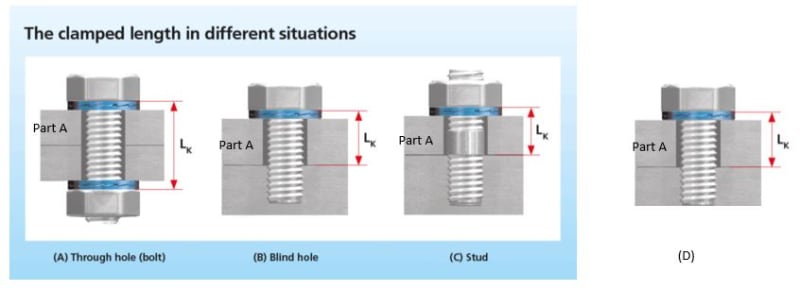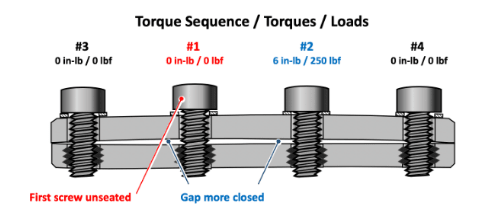Navigation
Install the app
How to install the app on iOS
Follow along with the video below to see how to install our site as a web app on your home screen.
Note: This feature may not be available in some browsers.
More options
Style variation
-
Congratulations cowski on being selected by the Eng-Tips community for having the most helpful posts in the forums last week. Way to Go!
You are using an out of date browser. It may not display this or other websites correctly.
You should upgrade or use an alternative browser.
You should upgrade or use an alternative browser.
Joint Pitch for Machining Part
- Thread starter sarclee
- Start date
- Status
- Not open for further replies.
shear pitch is whatever it needs to be.
rules of thumb, depending on company, are 4-6D, 6-8D, etc. but these are rules of thumb. 10D is not (in and of itself) "unacceptable".
With shorter pitches net section becomes a concern. With longer pitches, inter-rivet buckling and possibly shear buckling.
One thing to watch ... the frame flange thickness and the skin thickness should be "similar" or thicker. You don't want a heavy (thick) skin on a light (thin) frame.
"Hoffen wir mal, dass alles gut geht !"
General Paulus, Nov 1942, outside Stalingrad after the launch of Operation Uranus.
rules of thumb, depending on company, are 4-6D, 6-8D, etc. but these are rules of thumb. 10D is not (in and of itself) "unacceptable".
With shorter pitches net section becomes a concern. With longer pitches, inter-rivet buckling and possibly shear buckling.
One thing to watch ... the frame flange thickness and the skin thickness should be "similar" or thicker. You don't want a heavy (thick) skin on a light (thin) frame.
"Hoffen wir mal, dass alles gut geht !"
General Paulus, Nov 1942, outside Stalingrad after the launch of Operation Uranus.
SWComposites
Aerospace
It all depends on the loads. You need to do a proper, detailed stress analysis.
- Thread starter
- #4
Thanks rb1957 & SWComposites. I start with basic pitching and then do the calculation from the nodal forces.
We have some product using through hole but not bolt and nut joint (#D). I would like to know if there is a standard to determine the thickness of Part A, the material being fastened?
Based on Nord-Lock, clamp length at least 3 times. Does it mean we have to use washer to compensate the clamp length if Part A is too thin?

We have some product using through hole but not bolt and nut joint (#D). I would like to know if there is a standard to determine the thickness of Part A, the material being fastened?
Based on Nord-Lock, clamp length at least 3 times. Does it mean we have to use washer to compensate the clamp length if Part A is too thin?

Wow... I thought I knew fastening... But this one has stumped-the-chump.
I simply have no idea what the real questions/issue is from the OP.
Regards, Wil Taylor
o Trust - But Verify!
o We believe to be true what we prefer to be true. [Unknown]
o For those who believe, no proof is required; for those who cannot believe, no proof is possible. [variation,Stuart Chase]
o Unfortunately, in science what You 'believe' is irrelevant. ["Orion", Homebuiltairplanes.com forum]
I simply have no idea what the real questions/issue is from the OP.
Regards, Wil Taylor
o Trust - But Verify!
o We believe to be true what we prefer to be true. [Unknown]
o For those who believe, no proof is required; for those who cannot believe, no proof is possible. [variation,Stuart Chase]
o Unfortunately, in science what You 'believe' is irrelevant. ["Orion", Homebuiltairplanes.com forum]
I think "Lk" as shown only influences the stretch of the bolt ... not the strength of the installation.
I would ask Nord-Lock help desk. Are they giving you "turn of nut" or bolt stretch requirements for torque setting ??
"Hoffen wir mal, dass alles gut geht !"
General Paulus, Nov 1942, outside Stalingrad after the launch of Operation Uranus.
I would ask Nord-Lock help desk. Are they giving you "turn of nut" or bolt stretch requirements for torque setting ??
"Hoffen wir mal, dass alles gut geht !"
General Paulus, Nov 1942, outside Stalingrad after the launch of Operation Uranus.
I guess, your question is very valid in case there is a separation force between Part A and Part B (lover plate). You may be worrying about punching shear, adding washer will increase shear cross section and will be helpful. If the concern is shear (lateral) I think you need to check bearing and tearing on the thinnest plate in the connection as well as shear on the bolt.
Therefore the loading type is essential part of the discussion. You cannot get proper answer if you do not provide it in your post unfortunately. Perhaps a hand sketch might be helpful. Perhaps you will find your answer during the load sketching, you never know.
Therefore the loading type is essential part of the discussion. You cannot get proper answer if you do not provide it in your post unfortunately. Perhaps a hand sketch might be helpful. Perhaps you will find your answer during the load sketching, you never know.
- Thread starter
- #8
I have seen not only Nord-Lock suggesting the clamp length is 3 times of the bolt diameter. If the joint I use is (D), does it mean I have to use 3x dia for part A thickness? It seems too thick as I have seen this joint, like the picture below, in our product with thinner part A...


OK, still confused.. BUT... for the examples shown above... cover or Assy fastened to a body with cap-bolts [mostly-threaded, heavy-duty screws] in tension...
The cap-bolts generate TENSION force ONLY. IF substantial SHEAR forces are present, then the joint must also have a way to remain fixed/stable to resist shear. This is typically accomplished with precision-fit [net-fit] SHEAR-PINS between the parts and positioned/spaced strategically within the fastener pattern.
NOTE1. Shear-pins I am referring-to are headless... such as solid dowel-pins machined to x.xxxx-inch tolerances... or coiled-spring pins for less precision assys... and are typically made from high strength steel or SStl with tapered-ends to facilitate a tight-fit installation into precision-matched holes between assemblies. They can also be used for guide/alignment between critical mechanical assemblies... as well as shear-force resisting.
Regards, Wil Taylor
o Trust - But Verify!
o We believe to be true what we prefer to be true. [Unknown]
o For those who believe, no proof is required; for those who cannot believe, no proof is possible. [variation,Stuart Chase]
o Unfortunately, in science what You 'believe' is irrelevant. ["Orion", Homebuiltairplanes.com forum]
The cap-bolts generate TENSION force ONLY. IF substantial SHEAR forces are present, then the joint must also have a way to remain fixed/stable to resist shear. This is typically accomplished with precision-fit [net-fit] SHEAR-PINS between the parts and positioned/spaced strategically within the fastener pattern.
NOTE1. Shear-pins I am referring-to are headless... such as solid dowel-pins machined to x.xxxx-inch tolerances... or coiled-spring pins for less precision assys... and are typically made from high strength steel or SStl with tapered-ends to facilitate a tight-fit installation into precision-matched holes between assemblies. They can also be used for guide/alignment between critical mechanical assemblies... as well as shear-force resisting.
Regards, Wil Taylor
o Trust - But Verify!
o We believe to be true what we prefer to be true. [Unknown]
o For those who believe, no proof is required; for those who cannot believe, no proof is possible. [variation,Stuart Chase]
o Unfortunately, in science what You 'believe' is irrelevant. ["Orion", Homebuiltairplanes.com forum]
L/D of 3 is typical design "rule of thumb". Your sketch (from Linkedin) is IMHO misleading (or not helpful in your situation, shown in your post of 22nd).
I don't know of a limitation of the thickness of the clamped plate, Lk in d), other than bearing etc.
"Hoffen wir mal, dass alles gut geht !"
General Paulus, Nov 1942, outside Stalingrad after the launch of Operation Uranus.
I don't know of a limitation of the thickness of the clamped plate, Lk in d), other than bearing etc.
"Hoffen wir mal, dass alles gut geht !"
General Paulus, Nov 1942, outside Stalingrad after the launch of Operation Uranus.
- Thread starter
- #11
SWComposites
Aerospace
In your joint config D from 22 August, the thickness of part A has nothing to do with the pull out strength of the threaded part.
I have no idea what shear load you are referring to. Pull out strength is related to an axial load on the fastener.
I have no idea what shear load you are referring to. Pull out strength is related to an axial load on the fastener.
- Status
- Not open for further replies.
Similar threads
- Question
- Replies
- 1
- Views
- 8K
- Locked
- Question
- Replies
- 6
- Views
- 1K
- Locked
- Question
- Replies
- 2
- Views
- 5K
- Locked
- Question
- Replies
- 10
- Views
- 6K
- Question
- Replies
- 7
- Views
- 6K
